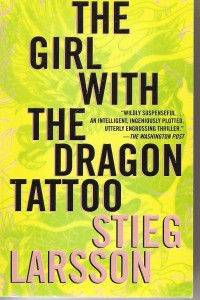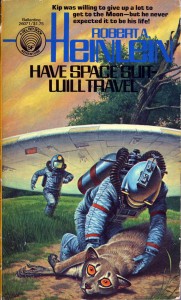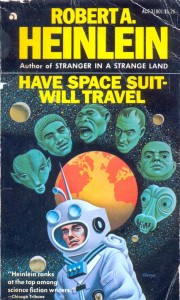Does a book need a cover? In this age, this futuristic time of 2015 in which we exist, with the rise of e-books and the number of print book titles shrinking more and more every year, do we even need to bother with covers, much less with cover art?
After all, a book is made up of words. Why do we even need the preamble of an image? Sure, we’d like to know what the book is called, maybe a brief description telling what the book is about before we plunge into the text. Why do we need an image at all?
 After all, many famous print books sport no artwork at all. They merely have the title and the author’s name in some quiet, sturdy typeface. J. D. Salinger’s iconic 1951 novel of teenage rebellion, The Catcher in the Rye, for instance. Although the original hardback edition was sold with a dust jacket decorated with a stylized graphic of a carousel horse, its Bantam paperback edition has only gold serif type against a red background. This was the edition that a generation of teens carried around in their back pockets throughout the sixties and seventies.
After all, many famous print books sport no artwork at all. They merely have the title and the author’s name in some quiet, sturdy typeface. J. D. Salinger’s iconic 1951 novel of teenage rebellion, The Catcher in the Rye, for instance. Although the original hardback edition was sold with a dust jacket decorated with a stylized graphic of a carousel horse, its Bantam paperback edition has only gold serif type against a red background. This was the edition that a generation of teens carried around in their back pockets throughout the sixties and seventies.
 Indeed, several books on offer at e-book sites have little more in the way of cover art. Some publishers of e-fiction offer standard covers of plain text against a neutral background with no deviation of type or form. Every book gets the same cover treatment. Does it help or hinder sales? Does anyone really care? Authors write their own ebooks, they make their own covers with little regard for good design. Does it matter?
Indeed, several books on offer at e-book sites have little more in the way of cover art. Some publishers of e-fiction offer standard covers of plain text against a neutral background with no deviation of type or form. Every book gets the same cover treatment. Does it help or hinder sales? Does anyone really care? Authors write their own ebooks, they make their own covers with little regard for good design. Does it matter?
Even legacy publishers seem to have little time for covers now. Slap the title of the book in big block letters so that it is legible in a thumbnail format. If it’s a major author, make sure his name is big and bold as well. If there’s room, stick a small little graphic, something non-specific. Good enough. Print it. The Penguin editions of Stieg Larsson’s The Girl Who… novels come to mind
Does it really matter what is one the cover of a book, either electronic or print?
Well, instead of going into a rant and making myself look like a lunatic or an old man angrily pining for the “good old days”, let me tell you a story.
 I had a paperback edition of Robert A. Heinlein’s Have Space Suit – Will Travel. I began reading it to my daughter. She was captivated by the first few chapters which introduced Clifford Russel and his mad desire to go to the moon. She particularly liked the character of Clifford’s father whom, she said, reminded her a lot of me.
I had a paperback edition of Robert A. Heinlein’s Have Space Suit – Will Travel. I began reading it to my daughter. She was captivated by the first few chapters which introduced Clifford Russel and his mad desire to go to the moon. She particularly liked the character of Clifford’s father whom, she said, reminded her a lot of me.
We put the book down, intending to finish later. However, other things got in the way… life things, you know… and one night at bedtime she asked if we could pick up where we left off. I went to the bookshelf and found the paperback. It was a Del Rey paperback edition from 1984 featuring cover art by Darrell K. Sweet. I began to read.
After a moment my daughter stopped me. “This isn’t the book,” she said.
“Yes it is,” I said. “The one about the boy who wants to go to the moon, remember? It’s the same story.”
“Yeah, I know, but it’s not the same book. That one had faces on the cover.”
 I was puzzled for a moment, but went back to the bookshelf and hunted around. Sure enough I had another paperback edition of Have Space Suit – Will Travel. This was an older, beat up, Ace edition from 1970. The cover art was by Steele Savage and, indeed, it depicted a series of faces ringed around the main character in his space suit. It also featured a black and white line drawing by Ed Emshwiller on the first page.
I was puzzled for a moment, but went back to the bookshelf and hunted around. Sure enough I had another paperback edition of Have Space Suit – Will Travel. This was an older, beat up, Ace edition from 1970. The cover art was by Steele Savage and, indeed, it depicted a series of faces ringed around the main character in his space suit. It also featured a black and white line drawing by Ed Emshwiller on the first page.
I began reading exactly where I left off from the Del Rey edition. It was the same text, but reading from this edition made my daughter happy. To this day it is still one of her favorite books.
No matter what edition it came in, Have Space Suit – Will Travel would still be the book that it is. Barring typographical errors, the book is the same from edition to edition. So what cover it is wrapped in makes little to no difference when it comes to enjoying it, or indeed, any particular book.
But that night, it did matter. I have always been a lover of books. I love all books in all forms, but I love some more than others. There are some editions that are special favorites. That night I realized that my daughter felt the same way. I knew then that she was and always would be a lover of books.
And you who are reading this — if you, too, are a lover of books, then you understand.











